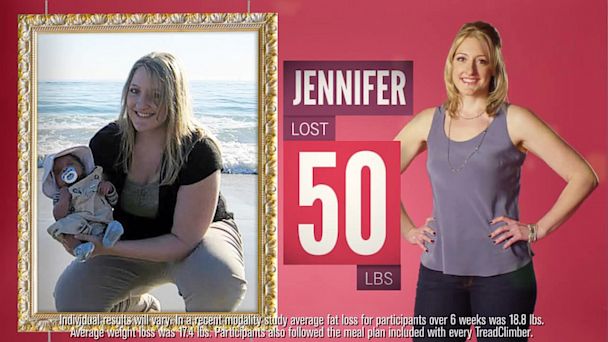Can You Spot The Fine Print?
Sometimes brands place key advertising messages in fine print tucked at the bottom of TV screens or print advertisements, making it harder for consumers to spot the full deal. The reasoning, according to Edgar Dworsky, a former assistant attorney general of Massachusetts and current editor of MousePrint.org, is because "[companies] know that consumers don't always read the fine print so they try and paint the rosiest picture they can in the headline but put the truth in the fine print."
Watch the full story on ABC's "The Lookout" Wednesday at 10 p.m. ET.
So what should you look for? Here are four common examples of fine print from recent ads:
The big message in this MiraLAX television commercial is, "Don't Wait to Feel Great." But there at the bottom of your screen, is the real deal: Their constipation relief product will take up to one to three days to go into effect. MiraLAX told ABC's The Lookout:
"We stand behind our advertising. MiraLAX works differently than other laxatives and does not cause bloating or cramping. Our ad educates consumers about the meaningful benefits of our product. Our tagline, 'Don't wait to feel great,' encourages consumers, when they use our product, to not delay treatment of occasional constipation once their symptoms appear - naturally, the sooner you begin to treat, the sooner you can get relief.
"The other copy you reference in our ad, 'generally produces a bowel movement in 1-3 days,' is taken from the products' FDA approved label and provides the consumer with details about the product's onset of action.
"Specifically, during the six months since this advertisement began to air, we have not received any complaints from consumers about this copy or the tagline. Further, as you should know, the advertisement and the claims in it were cleared by all of the networks, including ABC, before airing.
"The ad was informed by consumer research on OTC laxative products. Our proprietary and confidential research suggests some consumers have experienced unpleasant side effects - such as gas, bloating and cramping - when taking other laxatives, consistent with the labeling of those other products. Some of those consumers also told us when they had subsequent episodes of occasional constipation, they delayed starting treatment. Naturally, delaying the start of treatment can increase the number of days they are constipated.
"MiraLAX works differently and does not cause those side effects. Our ad helps educate consumers about this meaningful benefit and encourages them to not delay treatment of occasional constipation when they use our product."

(Image Credit: ABC News)
The "Save 80%" claim from the cover of Harbor Freight Tool's catalog sounds impressive. But can you spot the fine print? The Lookout team had a hard time seeing it, until they put the advertisement under a magnifying glass. Only then was it easy to see the almost-hidden message: "UP TO." So the "save 80%" message turned out to be "save up to 80%", a big difference.

(Image Credit: ABC News)
In this Mother's Day Macy's advertisement for a storewide sale, lots of savings are listed. The fine print lists the merchandise not covered by that sale, including something called "selected licensed departments." What exactly is that? After The Lookout team spoke with Macy's, they discovered that those "selected license departments" include 114 brands omitted from the sale event. Macy's told the team:
"We do note that the advertisement shown to us is from four years ago, and that we continue to make adjustments on exclusion language to ensure clarity based on feedback from our customers. We are constantly reviewing our messaging, which may vary by offer, and we strive to make sure that our customer can readily understand the nature of our promotions and that we are clear in our message as to both what is included and what is excluded. We do not wish to disappoint anyone and always aim to hold ourselves to the highest standards."

(Image Credit: ABC News)
This message of the Bow Flex ad seems loud and clear: Want to lose weight? BowFlex TreadClimber is the answer: In fact they claim, "All you have to do is walk." Customers say they lost up to 80 pounds as a result. But the fine print reveals that you might have a harder time seeing those amazing results yourself. It turns out "the average weight loss was 17.4 pounds." Even that involved more than just walking. The fine print also lets you know that you have to follow a meal plan. That's a diet that eventually drops your food intake to just 1,300 calories a day for men, and only 1,000 for women. In response, BowFlex said:
"I think it helpful to offer up some details that should clarify the positioning in our TreadClimber ads.
"It is important to understand that we promote healthy meal choices and diet plans/recipes etc. … as part of any fitness regime with any of our pieces of exercise equipment. In this case the TreadClimber ships with a specific meal plan. In addition we supply exercise and fitness tutorials with our products to ensure correct usage and user safety.
"We designed the TreadClimber as a walking machine which is why we chose that action as the primary callout in our lead message. It is also important to note that we use real people as unpaid testimonials talking about their real results. We test our equipment to determine average baseline results but also incorporate the success stories as ways to showcase results that real people have achieved and that do exceed the average testing data.
"Whether consumers see us on television, in print or across our social media properties our messaging is factual and not designed in any way to mislead the consumer into expecting false promises or misleading results. In fact we hope it will ignite their imaginations and motivate them to make healthy changes!"

(Image Credit: ABC News)